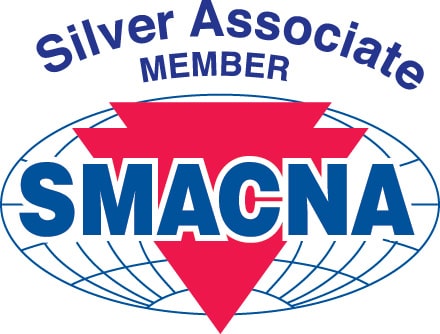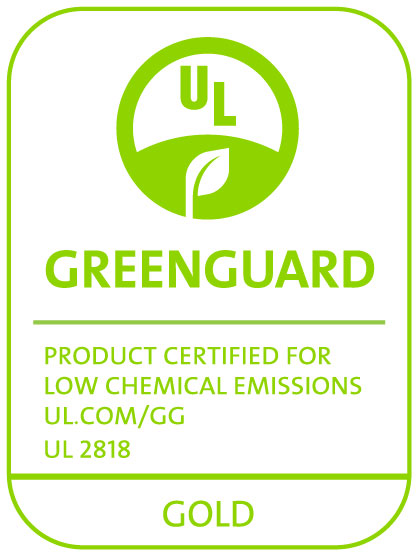Refrigerant pipe insulation is crucial for refrigeration systems. Refrigeration systems, also known as below-ambient systems, vary by application (commercial and industrial), temperature requirements (high & low), refrigerant types (traditional and natural), and operating environments. Common refrigeration system applications include supermarkets, cold storage, food processing, beverage dispensing lines, ice rinks, morgues, laboratories, chillers, data centers, and owner-specific applications. While refrigeration pipe insulation is commonly installed indoors, many systems include piping and equipment on exterior rooftops to conserve interior space or to preserve interior design aesthetics.
Commercial and industrial refrigeration systems have a few things in common. They are demanding, designed to operate 24/7, may require wide temperature fluctuations, are designed to avoid costly downtime, and are always subject to a persistent enemy – moisture which can result in surface condensation. Condensation creates the potential for decreased thermal efficiency, pipe corrosion under refrigerant piping insulation, icing, mold/mildew growth, and system failure.
Refrigeration pipe insulation plays a critical role in controlling heat gain of refrigerant fluids, moisture (vapor drive), surface condensation, and icing. National energy standards and codes require refrigeration pipe insulation on cooling systems, such as chilled water, brine, and refrigerants, that operate with service temperatures below 40°F (typically 20°F) and up to 60°F. However, some refrigeration systems operate as low as -50°F (ammonia) and up to 250°F (intermittent defrost cycles).
The proper refrigerant pipe insulation thickness, factoring in system operating conditions such as pipe size & type, ambient temperature, relative humidity, wind speed (if applicable), and jacketing, can be calculated to control surface condensation for the life of an insulation system.
The ASHRAE Handbook recommends closed-cell types of refrigeration pipe insulation for refrigeration system applications, such as cellular glass, flexible elastomeric, polyisocyanurate, and polystyrene, due to their low vapor transmission (WVT), low water absorption qualities and not always requiring a supplemental vapor barrier. Important refrigeration pipe insulation selection considerations include the following reference standards (not all-inclusive):
Thermal conductivity (thermal k-value) / ASTM C518
Water vapor transmission (WVT) / ASTM E96
Water absorption / ASTM C209
Continuous service temperature / ASTM C411
Fire safety (25/50) / ASTM E84, UL 723, CAN/ULC-S102
Fungi resistance / ASTM G21
UV resistance / ASTM G7
Of the closed-cell refrigerant pipe insulation types referenced above, flexible elastomeric insulation has been commercially available in the United States for over 50 years and is a proven refrigeration pipe insulation solution due to its closed-cell structure, built-in vapor barrier (smooth continuous outer skin), and flexible nature. American-manufactured flexible elastomeric insulation typically meets all of the above standards up to 2” thick (ASTM E84 25/50). While always available in a matte black color, tubes are now available in white color to blend in with commercial ceilings.
Additionally, flexible elastomeric refrigerant pipe insulation manufacturers offer their own system solutions such as insulated pipe hanger fittings to prevent moisture damage at pipe hanger locations (a common failure point due to compression of insulation from loaded pipes), special purpose contact adhesives (including low-VOC formulas), rubber/foam tapes and protective coatings.
To ensure the long-term performance of a flexible elastomeric refrigeration pipe insulation installation, it’s critical that all insulation seams are completely sealed with the manufacturer’s adhesive to provide a continuous vapor barrier. Additionally, closed-cell elastomeric foam insulation is susceptible to UV degradation when installed in exterior environments such as commercial rooftops. Refrigeration pipe insulation should be protected from solar radiation with the manufacturer’s specially-formulated protective coating (meets national energy code requirement) or jacketed if mechanical damage is expected (foot traffic, birds, varmints, or severe weather).
Aeroflex USA’s AEROFLEX® brand of refrigerant piping insulation is American-made in Sweetwater, Tennessee, meets the referenced industry standards, and is composed of an EPDM rubber. EPDM offers a higher continuous service temperature and slower UV degradation rate than traditional NBR/PVC rubber, which is hydrophobic (does not induce or react to moisture), and is naturally microbial-resistant (no biocides added).
Refrigeration systems present some of the toughest insulation challenges of any mechanical system. Supermarkets, beverage-dispensing lines, food processing, ice rinks, cold storage, etc., rely on insulation to prevent heat gain and control surface condensation, both of which put products and/or operations at risk.
Refrigeration applications encompass a variety of operating temperatures, piping materials, space and environmental conditions, refrigerants and fluids – all of which impact refrigeration insulation selection.
AEROFLEX EPDM™ is capable of meeting all these demands and conditions. The extremely low permeability and durability of EPDM foam makes it a reliable solution for these demanding applications. It is an effective, low-cost alternative to cellular glass, and easier to install.











